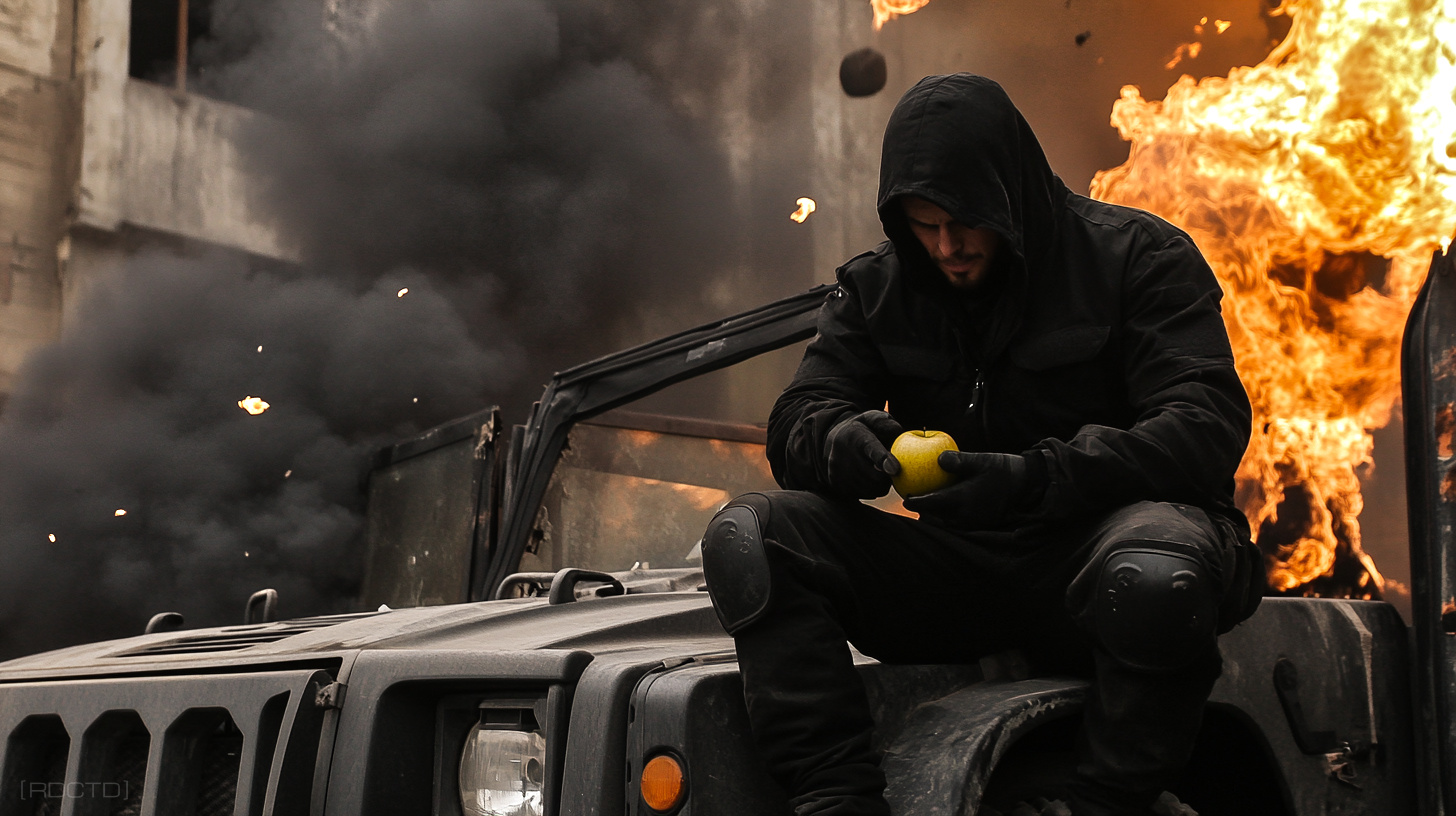 A mindset that every operative, soldier, or high-stakes professional should cultivate. It’s the ability to remain calm, focused, and capable in moments of chaos and when everything around you is falling apart.
A mindset that every operative, soldier, or high-stakes professional should cultivate. It’s the ability to remain calm, focused, and capable in moments of chaos and when everything around you is falling apart. ![]()
When everything is unpredictable, the adaptable is unstoppable.
Whether you’re in the middle of a firefight, being pursued by enemy forces, or extracting intel while a cover is unraveling, your ability to find clarity in that chaos is what keeps you alive, and keeps the mission on track.
This isn’t just about keeping your head down and surviving. It’s about operating – moving, thinking, and acting – when most people freeze or falter.
You don’t eliminate chaos. You operate through it – efficiently, quietly, and without hesitation.
This level of performance doesn’t come from raw toughness alone. It comes from familiarity. Chaos becomes manageable when it’s no longer unfamiliar. That’s why elite operators, including covert operatives and Special Forces, train to simulate stress: live-fire drills, sensory overload, sleep deprivation, hostile roleplay, and exposure to uncertainty.
The goal is to rewire your baseline – so that confusion, noise, danger, and urgency don’t shut you down, but rather cue a calm, practiced response. You won’t think your way out of chaos; your body and mind will respond based on what they’ve already done a thousand times in training.
Comfort in chaos isn’t detachment, it’s engagement without panic.
Physiologically, stress floods the body with adrenaline, narrows your focus, and can impair decision-making. But when you’ve trained under those conditions repeatedly, your nervous system stops interpreting them as a threat and starts treating them as an environment meant to operate in.
You begin to associate that adrenaline with clarity, not panic. Your breathing stays controlled, your visual scan stays wide, and you can prioritize tasks. Instead of reacting emotionally, you respond tactically.
This is tradecraft biology – managing your internal state so your external actions stay clean, deliberate, and professional.
Chaos reveals the truth. What breaks, what holds, and who leads.
In covert operations, chaos is often the plan. Diversions, misdirection, and rapid tempo shifts are tools we use to destabilize the target while maintaining our own composure. If you’re rattled by the very environment you’re trying to create, you’re a liability and have no business being in the field.
You can’t run surveillance and counter-surveillance simultaneously if you’re overwhelmed by street noise, movement, or the pressure of a ticking clock. You have to be able to read chaos like a language – see patterns, identify threats, and make decisions under conditions most associate with failure.
You’re not just watching the target; you’re tracking exits, watching reflections in windows, cataloging faces, scanning for tails – all while looking like you’re doing nothing at all. That level of awareness and calm isn’t instinctual. It’s earned through exposure, repetition, and deliberate stress inoculation.
Operatives who learns to embrace chaos as operational camouflage have the upper hand, because while others are reacting, you’re still executing.
Chaos is just noise until you learn to read it. Then it’s intel.
In everyday “normal” life, comfort in chaos translates to handling extreme stress, crisis, danger, and unpredictability with the same calm mindset and tactical response you’d use in the field as a professional.
Training yourself to stay calm under pressure – through physical stress, cold exposure, breath control, or even intentionally managing small daily conflicts – builds that muscle over time.
Life’s going to hit hard. If you can remain functional, deliberate, and adaptable when things break down, you’re ahead of 90% of people. That’s real-world tradecraft and it’s not just useful – it’s essential.
The chaos around you is a distraction. The chaos inside you is the real threat. Own it.
This mindset also applies to combat, naturally. A calm fighter sees openings where others only see fists and fear. When violence erupts, your goal isn’t to control every variable – that’s impossible. Your goal is to remain functional in a dynamic, unpredictable environment.
Whether you’re clearing a room, engaging in hand-to-hand, or exfiltrating under duress, comfort in chaos means you conserve energy, make fewer mistakes, and move with precision. You don’t burn mental bandwidth on “what ifs”; you execute based on what is.
This is where training under stress pays its dividends. You’ve already done the reps, drilled the movements, felt the pressure in your system – so when it’s real, you’re not scrambling to remember what to do.
You’re falling back on muscle memory and strategic thinking.
Your mind stays fluid, able to pivot when the plan breaks down. That gives you a decisive edge. You’re not wasting time second-guessing or panicking – you’re exploiting openings, managing distance, and moving with intent.
You stay ahead by staying cold and composed.
In violence, composure isn’t just a strength, it’s a weapon.
When chaos hits, don’t chase control. Establish rhythm.
Comfort in chaos is about adaptability. The battlefield, the city street, or the negotiation table – all of them can erupt into chaos.
The operative who thrives is the one who stops trying to force order and starts using chaos as cover, as leverage, and as opportunity. You don’t just survive in it, you move in it. Operate in it.
That’s how you stay ahead of the threat and finish the mission.
Comfort in chaos isn’t a personality trait; it’s a trained condition. And it’s non-negotiable if you expect to function at a high level in covert operations.
![]()
// Chaos isn’t a storm to weather, it’s a wave to ride.
[INTEL : Fear is The Body’s Alarm System]
[OPTICS : Undisclosed, Eastern Europe]
![[RDCTD]](https://rdctd.pro/wp-content/uploads/RDCTD-Covert-Operative-Tradecraft-Guide-LOGO-tk.png)
![[RDCTD]](https://rdctd.pro/wp-content/uploads/RDCTD-Covert-Operative-Tradecraft-Guide-LOGO-mobile.png)

